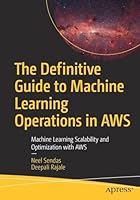
Getting Started with TensorFlow
- Length: 180 pages
- Edition: 1
- Language: English
- Publisher: Packt Publishing
- Publication Date: 2016-07-29
- ISBN-10: B01H1JD6JO
- Sales Rank: #901660 (See Top 100 Books)
Key Features
- Get the first book on the market that shows you the key aspects TensorFlow, how it works, and how to use it for the second generation of machine learning
- Want to perform faster and more accurate computations in the field of data science? This book will acquaint you with an all-new refreshing library—TensorFlow!
- Dive into the next generation of numerical computing and get the most out of your data with this quick guide
Book Description
Google’s TensorFlow engine, after much fanfare, has evolved in to a robust, user-friendly, and customizable, application-grade software library of machine learning (ML) code for numerical computation and neural networks.
This book takes you through the practical software implementation of various machine learning techniques with TensorFlow. In the first few chapters, you’ll gain familiarity with the framework and perform the mathematical operations required for data analysis. As you progress further, you’ll learn to implement various machine learning techniques such as classification, clustering, neural networks, and deep learning through practical examples.
By the end of this book, you’ll have gained hands-on experience of using TensorFlow and building classification, image recognition systems, language processing, and information retrieving systems for your application.
What you will learn
- Install and adopt TensorFlow in your Python environment to solve mathematical problems
- Get to know the basic machine and deep learning concepts
- Train and test neural networks to fit your data model
- Make predictions using regression algorithms
- Analyze your data with a clustering procedure
- Develop algorithms for clustering and data classification
- Use GPU computing to analyze big data
About the Author
Giancarlo Zaccone has more than 10 years of experience managing research projects in both the scientific and industrial domains. He worked as researcher at the C.N.R, the National Research Council, where he was involved in projects related to parallel numerical computing and scientific visualization.
Currently, he is a senior software engineer at a consulting company developing and maintaining software systems for space and defence applications.
Giancarlo holds a master’s degree in physics from the Federico II of Naples and a 2nd level postgraduate master course in scientific computing from La Sapienza of Rome.
He has already been a Packt author for the following book: Python Parallel Programming Cookbook.
You can contact him at https://it.linkedin.com/in/giancarlozaccone
Table of Contents
Chapter 1. Tensorflow – Basic Concepts
Chapter 2. Doing Math With Tensorflow
Chapter 3. Starting With Machine Learning
Chapter 4. Introducing Neural Networks
Chapter 5. Deep Learning
Chapter 6. Gpu Programming And Serving With Tensorflow







